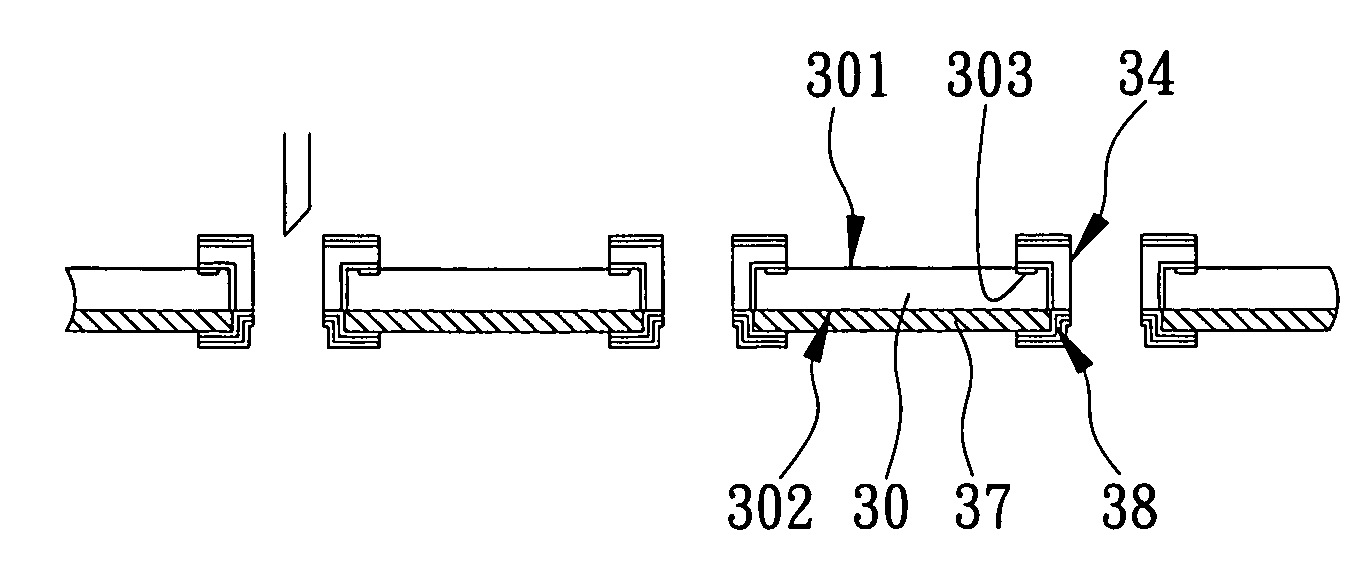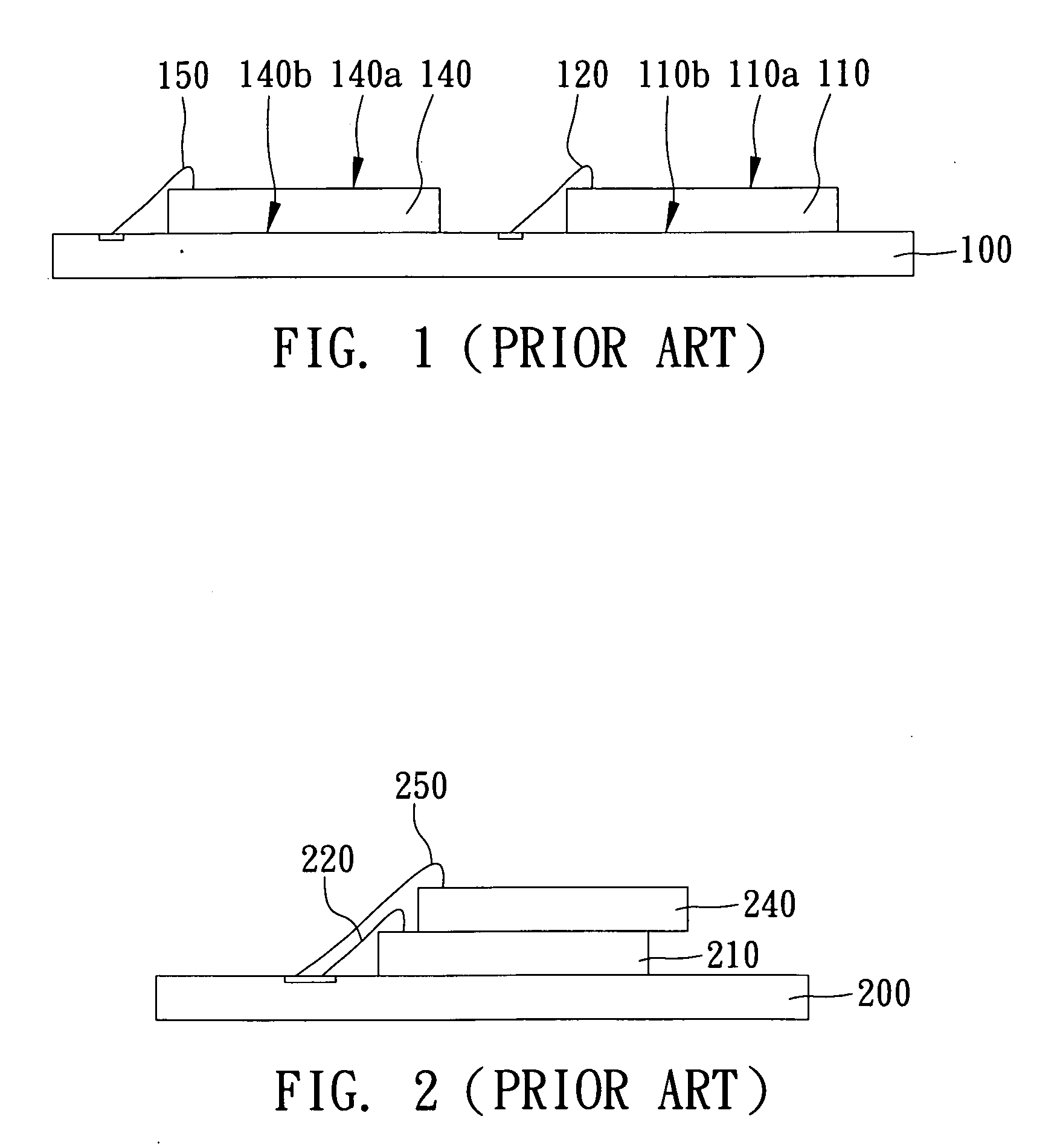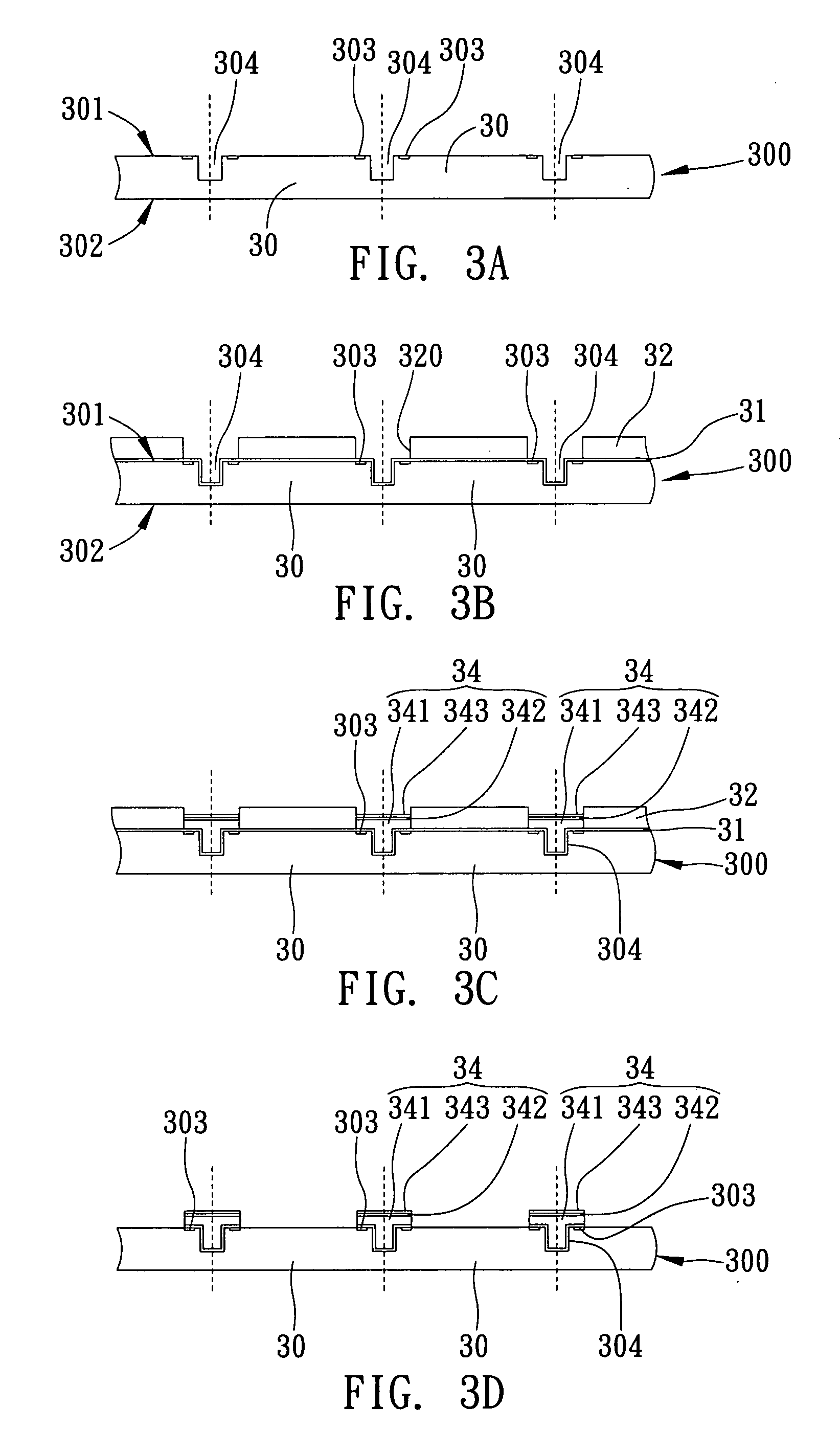Stackable semiconductor device and fabrication method thereof
a technology of semiconductor devices and stacking dies, applied in semiconductor devices, semiconductor/solid-state device details, electrical apparatus, etc., can solve the problems of reducing size, increasing cost, and reducing method size, so as to avoid poor electrical quality, increase electrical functionalities, and not increase the area of stacked dies
- Summary
- Abstract
- Description
- Claims
- Application Information
AI Technical Summary
Benefits of technology
Problems solved by technology
Method used
Image
Examples
first embodiment
[0026]Referring to FIGS. 3A to 3I, a stackable semiconductor device and a fabrication method thereof according to a first embodiment of the present invention is depicted.
[0027]As shown in FIG. 3A, a wafer 300 with a plurality of dies 30 is provided. The dies 30 and the wafer 300 have an active face 301 and a non-active face 302. A plurality of solder pads 303 is disposed on the active face 301 of the dies 30. Grooves 304 are formed between two neighboring solder pads 303.
[0028]As shown in FIGS. 3B to 3D, a conductive layer 31 is formed on the active face 301 using methods such as sputtering. The conductive layer 31 can be made of materials such as Ti / Cu, TiW / Cu, TiW / Au, Al / NiV / Cu, NiV / Cu, Ti / NiV / Cu or TiW / NiV / Cu. Then, a resist layer 32 is further formed on the conductive layer 31 with a plurality of openings 320 that correspondingly expose the grooves 304.
[0029]Then, electroplating is performed to form a first metal layer 34 in the grooves 34 inside the resist openings 320. The fir...
second embodiment
[0038]Referring to FIG. 5, a cross-section view of a stackable semiconductor device according to a second embodiment of the present invention is depicted. The semiconductor device of this embodiment is similar to that of the previous embodiment, the main difference being that the first metal layer 44 electroplated on the active face 401 of the die 40 is made of gold (Au), facilitated by pre-sputtering the conductive layer 41 (e.g. TiW / Au) on the active face 401. It has a thickness of about 15˜30 m. Additionally, the second metal layer 48 electroplated on the non-active face 402 is made of tin (Sn) or gold (Au), facilitated by pre-sputtering the conductive layer 41′ (e.g. Ti / Cu, TiW / Cu or TiW / Au) on the non-active face 402. It has a thickness of about 20˜40 m.
[0039]As a result, during stacking, the second metal layer (e.g. tin) of one semiconductor device can be directly thermally compressed onto the first metal layer (e.g. gold) of another semiconductor device, thus forming a eutect...
third embodiment
[0041]Referring to FIGS. 6A to 6D, a cross-section view of a stackable semiconductor device according to a third embodiment of the present invention is depicted. For simplicity, elements in this embodiment that are the same or similar to those in the first embodiment are designated by the same reference number.
[0042]The semiconductor device of this embodiment is similar to that of the first embodiment, the main difference being that, after forming grooves 304 between the adjacent solder pads 303, an insulating layer of polymer gel 310 is further formed in the grooves 304. The polymer gel 310 forms dents 304′. Then, a conductive layer 31 is formed on the active face 301 of the wafer 300, the dents 304′ and in the grooves 304, thus forming the polymer gel 310 between the die 30 and the conductive layer 31. The polymer gel 310 can be made of materials such as polyimide (PI) or benzocyclobutene (BCB). The polymer gel 310 increases insulation and adhesion between the die 30 and the condu...
PUM
 Login to View More
Login to View More Abstract
Description
Claims
Application Information
 Login to View More
Login to View More - R&D
- Intellectual Property
- Life Sciences
- Materials
- Tech Scout
- Unparalleled Data Quality
- Higher Quality Content
- 60% Fewer Hallucinations
Browse by: Latest US Patents, China's latest patents, Technical Efficacy Thesaurus, Application Domain, Technology Topic, Popular Technical Reports.
© 2025 PatSnap. All rights reserved.Legal|Privacy policy|Modern Slavery Act Transparency Statement|Sitemap|About US| Contact US: help@patsnap.com



